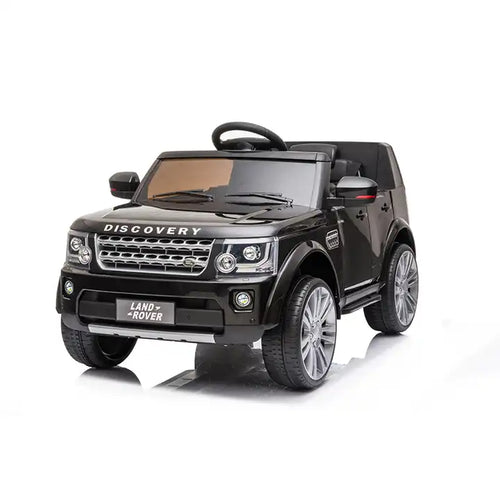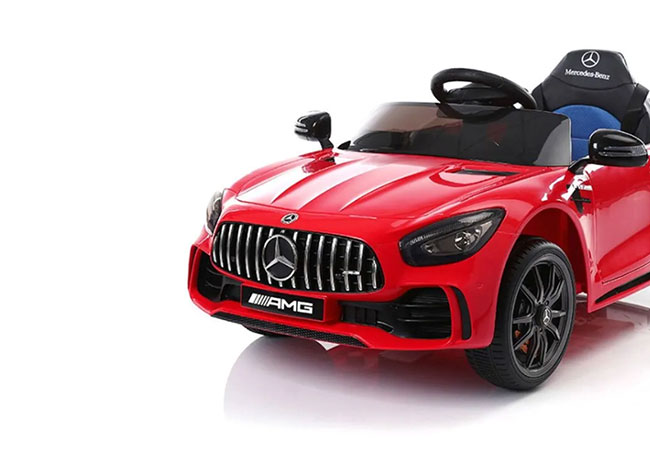Handy Reasons On Deciding On Kids Ride On Cars
Wiki Article
What Should I Know About Battery Life And The Charging Time Of An Electric Ride-On Children's Car?
Understanding the charging times and battery life for the electric ride on your kids' car will help you ensure that your kids are entertained for a long time. Here's everything you must be aware of - Type of battery -
Most electric ride-on vehicles can be recharged and utilize either lithium-ion or led-acid batteries. Lithium ion batteries have a longer battery life than lead-acid batteries and charge more quickly.
Battery Capacity
The time of operation for a ride-on car is determined by the battery capacity. It is measured in amp-hours, or Watt-hours. Higher capacity batteries offer longer time between recharges.
Run Time -
The run time of the electric ride-on car is referred to the amount of time it is able to continue to operate on a single charge. This can depend on factors such as the battery's capacity along with motor speed, conditions and weight of the rider.
The typical time to run electric ride-on cars is between 30 minutes to 2 hours. Some batteries with a high capacity may provide an extended run time.
Charging time -
Charging time is the amount of time needed for a battery to be fully charged after it is depleted. The time to charge is based on the charger's specifications capacity, battery capacity, and charging method.
Charging times for electric ride on automobiles are generally between 8 and 12 hours. Some models have faster charging speeds, especially with lithium ion batteries.
Follow the charging instructions provided by the manufacturer to ensure safety of the battery and long-term durability. The battery's overcharging or undercharging could affect its performance and lifespan.
Charging Method
Electric ride-on vehicles are usually equipped with a charger which connects to a standard home outlet. Some models have fast-charging features or a smart charging system which monitors the state of charge and adjusts the rate of charging in line with the state of charge.
To ensure that the battery is not damaged or harm to electrical systems, ensure that the charger included with the ride on car is compatible with the charging port.
Batteries for Additional Use -
Some electric ride-on cars offer the option of purchasing additional batteries or extra batteries to prolong the playtime. It is possible to replace worn-out batteries with ones that are fully charged, so you'll have less time between sessions.
By understanding the battery life and charging times of an electric ride on children's car, you can ensure that your children have fun and uninterrupted playtime while exploring their surroundings. Regularly charging the battery, and following appropriate charging guidelines will maximize battery life and performance. See the most popular remote control childrens cars for more examples including 2 seater electric cars, car toy car toy, toy a car, ride on car, race car toy, remote control childrens car, remote control childrens car, pedal car, race car toy, car for toy and more. .

What Is The Difference Between Indoor And Outdoor Versions Of Kids Cars Designed?
Outdoors or indoors, children' cars are designed to be used in different situations and environments. The models are made differently: Indoor Use Cars
Dimensions and Weight Cars that are designed for indoor use are usually lighter and smaller in size to maneuver easily within confined spaces like playrooms, living rooms, or hallways. They are compact enough to maneuver around tight corners and narrow passageways without causing damage to furniture or walls.
Low Ground Clarity Vehicles in indoor environments have low clearances to prevent them getting stuck, or getting caught, upon obstacles such as carpets, rugs or thresholds. This enables the vehicle to move smoothly and without interruption over indoor surfaces without danger of it becoming stuck or falling over.
Smooth Wheels. Cars that are used indoors typically have wheels made from substances that have a smooth surface, such as plastic or rubber. These wheels provide better grip and traction on smooth surfaces, such as hardwood floors, laminate flooring or tiles. They are designed to minimize the sound and avoid scratching or scuffing indoor surfaces.
Limited Speed - Indoor usage cars usually are slower to assure safe and controlled operation in confined space. This prevents collisions and accidents with furniture like walls or obstacles found inside.
Outdoor Use Cars -
Durable Construction- Cars which are made for outdoor use are built using sturdy materials. They could be constructed of strong metal or plastic to withstand outdoor elements like the sun, humidity, temperature variations and rough handling. They are more resistant to wear and tear caused by exposure to conditions outside.
The higher the ground clearance, the better able they are to deal with bumps and uneven terrain. They can traverse rough surfaces such as gravel, pavement, grass, or dirt without becoming stuck or damaged.
Traction tires - Tires designed for outdoor vehicles are usually equipped with treads and patterns that provide better grip and traction on rough or uneven terrains. This ensures stability and control on surfaces outdoors, preventing sliding or skiing.
Weather Resistant: Cars designed for outdoor use typically have weather-proof features like sealed electronics or casings that are waterproof. They can also make use of rust-resistant material to prevent damage from water. This allows them to withstand exposure to rain, mud, or puddles without compromising performance.
High-Speed - Vehicles that are designed to be used outdoors have higher speeds due to their design to handle the open areas and distances you can encounter in the natural world. It provides an exhilarating and thrilling experience for kids who are exploring outdoor environments.
Parents can choose a vehicle for their children that suits their requirements, whether indoors or outside, by taking into consideration the features and design. This will ensure the safety, enjoyment and long-lasting experience for children. Take a look at the top find out more on McLaren kids car for blog info including toy in car, cars pedal car, ride electric car, ride electric car, ride on car, a toy car, toy car for car, car electric ride on, toy in car, electric rideons and more. .

What Is The Most Reliable Remote Control Car For Kids? What Are The Pros And Cons Of These Vehicles?
Remote control children's cars are also referred to remote controlled vehicles or RCs. They are available in a variety of designs, prices, and sizes to suit every budget and preference. This article will provide an overview of the different types, sizes and prices of children's remote control cars, along with their pros and cons.
Electric RC Cars – These are battery-powered, remote-controlled vehicles which can be used outdoors and indoors. They come in various designs, such as trucks, buggies, and sports cars.
Nitro RC Cars : Gas-powered cars that are operated remotely and have more performance, but need more care. They are generally larger and cost more than an electric RC car.
Scale models are replicas of real-life vehicles, such as cars and trucks. They are also operated remotely. Scale Models can be found in a variety of scales that range from 1-10 to 1-24. The larger scales offer more detail and realistic appearance.
Sizes -
The sizes of remote-control cars for children range from tiny micro-sized models to larger-scale versions. The size of the car can influence the performance of a car as well as its speed and the handling characteristics.
Micro-sized vehicles, which are lightweight and small, are perfect for indoor use and also by younger children. Models with larger scales are more powerful, durable and are thus perfect for off-road and outdoor racing.
Prices
Prices vary depending on the dimensions, features and build quality.
Small electric RC cars be priced between $20 and $100 While larger-scale electric and nitro RC cars can range between $100 and $500 or more.
Scale models, top-quality hobby RCs range between several hundred dollars up to a whopping $1,000, depending on the quality of the model and the performance.
Pros & Cons
Pros -
Children and adults can enjoy the thrills and excitement of remote-controlled cars.
Skills Development: Operating an RC vehicle helps develop spatial awareness, hand-eye coordination and problem solving skills.
Social Interaction. You can enjoy RC vehicles with your friends and family, which promotes social interaction.
Customization – Many RC automobile models are customized using aftermarket parts as well as upgrades and accessories to boost performance and aesthetics.
Cons
Cost - A top-quality model with advanced features can cost a lot, particularly for hobby grade models.
Learning Curve: Operating a RC Car requires training and experience young children may struggle initially.
Maintenance - RC cars need regular maintenance, such as cleaning, lubrication and occasional repairs or part replacements.
Safety Issues - RC car safety could be impacted through electrical hazards, collisions and other hazards when the vehicles aren't controlled and used with caution from an adult.
In general, remote-controlled kids' vehicles provide a thrilling and learning experience for all kids. However, when choosing the model that's right for your child, it is important to be aware of factors such as the price, size, features and security. Hobby-grade RCs may be suitable for teenagers and older children, while more basic models are suitable for youngsters and children who are just beginning to learn. See the most popular Lamborghini kids car kidscars.co.uk news for site info including childrens digger, childs car toy, electric rideons, remote control childrens electric cars, car toy car toy, remote control childrens car, ride ons, childrens digger, race car toy car, toy with car and more. .
